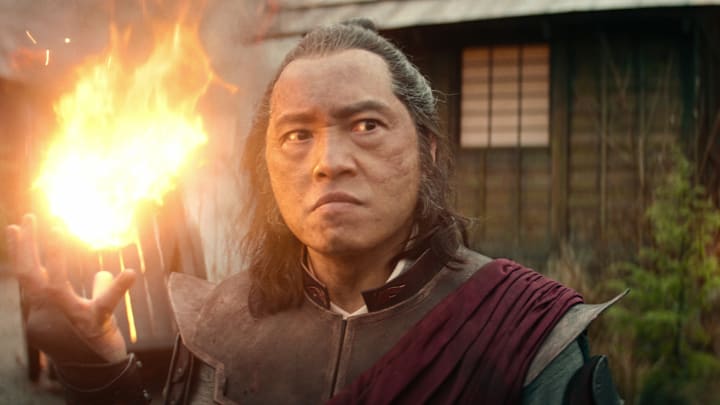One of the most important elements of Avatar: The Last Airbender and its sequel show The Legend of Korra is that certain people are able to manipulate phycial elements through a process called bending. The four main types of bending are based on the classic elements of air, water, earth and fire. However, there are many different types of sub-bending abilities that branch off from the original four.
Here is every type of sub-bending, who uses it and how it works.
Water:
1. Bloodbending
Bloodbending is the ability to bend the blood inside a person's body and control their actions. The technique was developed by the waterbender Hama while she was imprisoned by agents of the tyrannical Fire Nation. Although her captors went to great lengths to keep her away from water, Hama surmised that all beings are made up of water, so she began to practice bloodbending on the rats that roamed around her prison cell. After she was strong enough, Hama used bloodbending to force the guards in her prison to let her free.
Much later, an elderly Hama was encountered by Team Avatar, and she taught her bloodbending technique to the young bloodbender Katara. The physical movements involved with bloodbending resemble a person manipulating the strings of marionette puppet, which makes it even more disturbing. By the time of The Legend of Korra, which is set a few generations after Avatar, bloodbending was outlawed and considered taboo because of its ability to take away someone's free will.
One caveat with bloodbending is that it is extremely rare and can only be performed during a full moon, when a waterbender's power is at its peak. However, the crime lord Yakone was able to figure out how to do it whenever he wanted to multiple people without even moving his arms, making him one of the most dangerous people in Avatar lore. Avatar Aang was able resist bloodbending while he was in the Avatar state and took Yakone's bending away. However, Yakone taught his bloodbending techniques to his sons Tarlokk and Amon.
Amon's bloodbending went even further than his father's, as he was not only able to do it whenever he wanted, but could block someone's chi pathways and permanently take their bending away.
2. Healing
One of the more friendly types of sub-bending is healing, which involves moving water through the energy pathways in someone's body to accelerate the healing process. Several factors are involved in the effectiveness of healing, including the skill of the bender, the type of wound (internal bleeding and illnesses are harder to heal) and the quality of water. As we see in season 2 of Avatar, Katara was able to use water from the spirit oasis at the North Pole to bring Aang back from the dead.
Healing is a fairly common type of sub-bending even during the Hundred Year War between the Fire Nation and the rest of the world. Every female waterbender in the Northern Water Tribe was taught how to heal, and by the time of The Legend of Korra, it seemed like most waterbenders had a basic understanding of how to do it.
A sort of sub-sub-bending of healing is body temperature control, which we see used in the Shadow of Kyoshi book. Some healers are able to lower their body temperature and slow down the body's functions to prolong death. This ability can also be used for more sinister purposes, as Avatar Kyoshi used it to freeze someone's heart and lungs. Leave it to Kyoshi to figure out as many ways as possible to fatally attack someone.
3. Spiritbending
Although this is also technically a sub-style of healing, I consider spiritbending to be in its own category. The technique involves bending water around a dark spirit to calm it and change the negative energy within into positive energy. The opposite effect can also be achieved if someone is trying to make a spirit more hostile. We see Korra's uncle Unalaq use spiritbending in season 2 of The Legend of Korra, and he taught it to Korra as well.
4. Plantbending
This one is pretty straightforward. Since plants are filled with water by nature, a waterbender can reach in to either extract the water from inside or bend the water inside to manipulate the plant itself.
The most prominent example of plantbending from the original series would be the swamp dweller Huu bending vines to surround himself in a plant suit. Hama also teaches Katara how to extract water from a field of flowers, which coudl theoretically be done to any plant is a waterbender chooses.
5. Other types of waterbending
There are other more subtle techniques that waterbenders learn, such as steam bending, cloud bending and condensation bending, which involves pulling water out of thin air in a humid environment.
Next up: earthbending. Click the button below to proceed:
